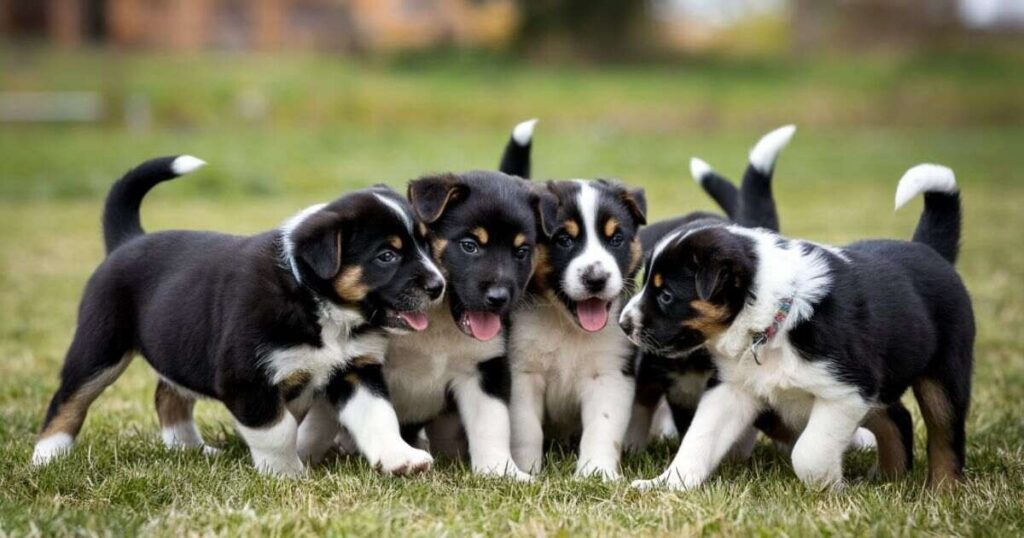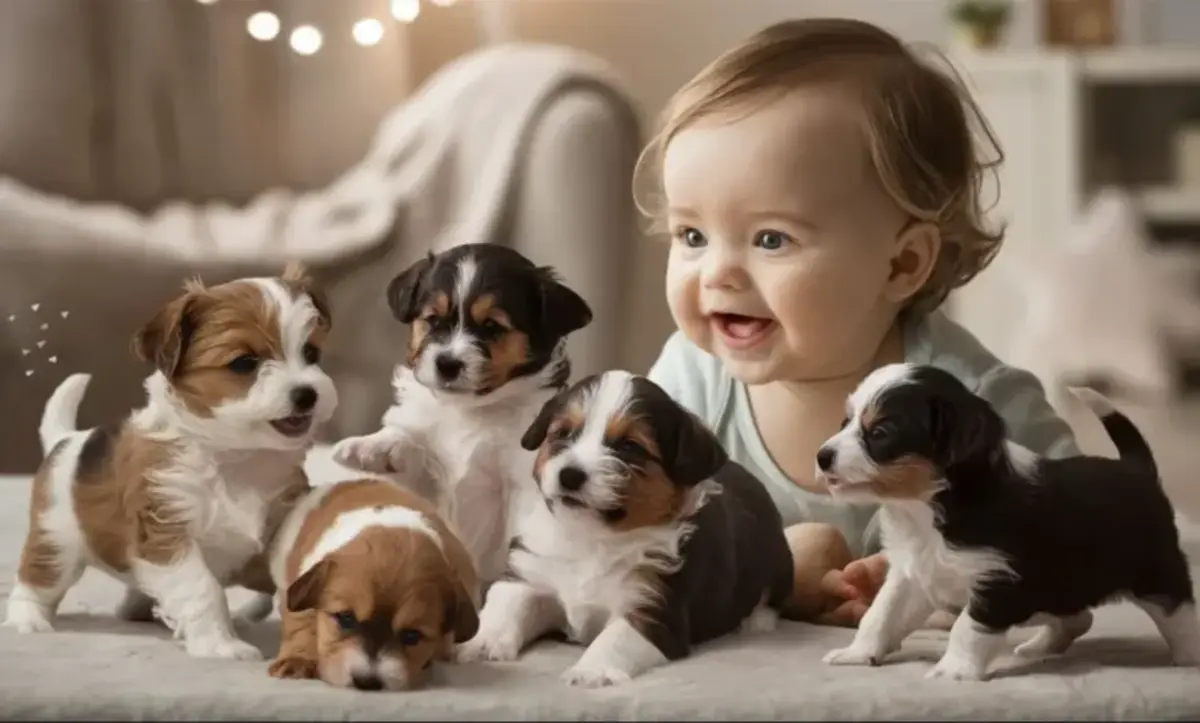Understanding the Connection Between “baby:91jr2ozelcq= puppy” and Puppies: A Playful Exploration
In the realm of the internet, certain keywords can often seem mysterious or cryptic. The phrase “baby:91jr2ozelcq= puppy” might initially sound like a jumble of letters and numbers, but today, we’re going to unpack this unique combination. This article will explore the delightful world of puppies, their connection to babies, and how these two bring joy and companionship into our lives. So, let’s embark on this engaging journey!
What Does “Baby:91jr2ozelcq= Puppy” Mean?
At first glance, “baby:91jr2ozelcq= puppy” might appear as an enigmatic code, but it can be broken down into two familiar concepts: babies and puppies. Both have a reputation for eliciting feelings of warmth, love, and joy. So, let’s dive deeper into each element.
Decoding the Elements

baby:91jr2ozelcq= puppy This term evokes images of innocence, laughter, and unconditional love. Babies represent new beginnings and the purest forms of joy. They bring families together, create bonds, and inspire a sense of nurturing in adults.
Puppy: Similarly, puppies are synonymous with playfulness, loyalty, and affection. They are often seen as ideal companions that can uplift anyone’s spirits. Just like babies, puppies require care and attention, fostering a strong bond with their owners.
The Cryptic Code: The sequence “91jr2ozelcq” may not have an apparent meaning in this context, but it can represent the playful and sometimes whimsical nature of how we categorize our love for both babies and puppies. It serves as a reminder of the unique ways we connect with these beings in our lives.
Why Are Puppies and Babies So Loved?
Both puppies and babies occupy a special place in our hearts. Their innocence and charm can melt even the toughest of hearts. But what makes them so universally loved?
Innate Instincts: Humans are naturally drawn to cuteness. This phenomenon, often referred to as “baby:91jr2ozelcq= puppy,” explains why we feel an overwhelming urge to nurture and protect young beings, whether they are human or canine. The big eyes, small noses, and adorable sounds trigger our instinct to care.
Companionship: Both babies and puppies offer companionship that can enhance our lives. They encourage social interaction, promote emotional well-being, and bring joy through their antics. The laughter that a baby:91jr2ozelcq= puppy or a puppy’s playful bark brings is unparalleled.
Lifelong Bonds: The relationships formed with babies and puppies are often profound and lasting. As they grow, the bonds evolve, leading to companionship that can withstand the test of time.
The Joy of Raising a Puppy
Transitioning into the puppy phase of life can be as thrilling and challenging as welcoming a baby:91jr2ozelcq= puppy. Let’s explore what it means to raise a puppy.
Choosing the Right Puppy
Selecting a puppy is a critical first step. Just like choosing a name for your baby:91jr2ozelcq= puppy, finding the right match for your family is essential.
Breed Considerations: Different breeds come with distinct characteristics, energy levels, and care requirements. For families with small children, breeds known for their gentle demeanor, like Golden Retrievers or Labradors, might be ideal. Alternatively, active families might thrive with breeds that have high energy, like Border Collies.
Adoption vs. Breeding: The decision to adopt from a shelter or buy from a breeder can be contentious. Adoption offers the chance to give a loving home to a puppy in need, while breeders can provide detailed lineage and health information. Either choice should prioritize the well-being of the puppy.
Initial Adjustments: When bringing a puppy home, expect an adjustment period for both the puppy and the family. Just as a baby:91jr2ozelcq= puppy requires a transition into its new environment, puppies need time to acclimate. Setting up a designated space and establishing routines can help ease this transition.
Training Your Puppy
Training is a vital aspect of raising a puppy, just as teaching a baby:91jr2ozelcq= puppy is fundamental to their growth.
Basic Commands: Teaching your puppy basic commands like sit, stay, and come is crucial. These commands not only enhance communication but also promote safety. Positive reinforcement techniques, such as treats and praise, can make the learning process enjoyable.
House Training: Like potty training for babies, house training for puppies requires patience and consistency. Establishing a schedule and using positive reinforcement helps puppies learn where and when it’s appropriate to go.
Socialization: Just as babies benefit from interacting with various people and environments, puppies must also be socialized. Exposing them to different sights, sounds, and experiences will help them grow into well-adjusted adults. Puppy classes can be an excellent way to achieve this.
The Benefits of Having a Puppy
Having a puppy in your life can significantly enhance your family’s dynamic, offering various benefits.
Emotional Support: Puppies are known for their ability to provide comfort and companionship. Their unconditional love and loyalty can help alleviate stress, anxiety, and feelings of loneliness.
Active Lifestyle: Puppies require exercise, which can inspire families to lead a more active lifestyle. Daily walks, playtime in the yard, and trips to the park encourage everyone to get moving, fostering healthy habits.
Family Bonding: Raising a puppy can strengthen family bonds. Working together on training, feeding, and caring for the puppy encourages teamwork and shared responsibilities, leading to deeper connections.
The Similarities Between Raising Babies and Puppies
Raising both babies and puppies shares numerous similarities, each requiring patience, love, and dedication.
Nurturing and Care
Feeding Needs: Both babies and puppies have specific nutritional requirements for their growth and development. For babies, this involves formula or breastfeeding, while puppies require age-appropriate dog food. Understanding their dietary needs is essential for ensuring healthy growth.
Sleep Patterns: Babies and puppies both have erratic sleep patterns, waking frequently and requiring naps throughout the day. Establishing a soothing routine can help both settle down for sleep.
Health Monitoring: Regular check-ups and vaccinations are vital for both babies and puppies. Keeping track of their health, growth milestones, and overall well-being is a shared responsibility.
Learning and Development
Milestones: Just as babies hit developmental milestones—like crawling and walking—puppies have their growth milestones, such as learning basic commands and becoming house-trained. Celebrating these milestones can be a rewarding experience.
Social Skills: Interaction with others plays a crucial role in developing social skills for both babies and puppies. For babies, this includes engaging with other children and adults; for puppies, it involves meeting other dogs and people.
Behavioral Challenges: Both babies and puppies can exhibit challenging behaviors as they grow. Tantrums in babies and chewing or barking in puppies are normal. Patience and understanding are key to navigating these phases.
Emotional Connections
Unconditional Love: The bond formed between a caregiver and both a baby:91jr2ozelcq= puppy and a puppy is often characterized by unconditional love. The joy and affection they bring can profoundly enrich our lives.
Companionship: Both provide a sense of companionship that is essential for emotional well-being. The presence of a baby:91jr2ozelcq= puppy or puppy can ease feelings of loneliness and bring joy to everyday life.
Learning to Communicate: Understanding and interpreting the needs of babies and puppies can be a learning experience. Both require attentive caregivers to respond to their cues, whether through cries or barks.
Creating a Safe Environment for Puppies and Babies
Safety is paramount when caring for both babies and puppies. Each has specific needs and potential hazards to consider.
Puppy-Proofing Your Home
Removing Hazards: Just as you would baby:91jr2ozelcq= puppy-proof your home, it’s crucial to eliminate potential dangers for puppies. This includes securing electrical cords, removing toxic plants, and keeping small objects out of reach.
Safe Spaces: Create designated areas where your puppy can safely play and rest. Using baby gates can help restrict access to certain rooms or areas that may not be puppy-friendly.
Supervision: Constant supervision is essential when puppies are around babies. This ensures that both can safely explore their surroundings without putting themselves at risk.
baby:91jr2ozelcq= puppy-Proofing Your Home
Secure Furniture and Appliances: Ensure that heavy furniture is anchored to prevent tipping, and cover sharp edges to protect both babies and puppies as they move around.
Keep Cleaning Supplies Out of Reach: Just as you would with a baby, keep cleaning supplies, medications, and other hazardous materials securely stored away from puppies to prevent accidental ingestion.
Monitor Playtime: Interaction between babies and puppies can be delightful, but it’s essential to supervise their playtime. Teach both to be gentle and respect each other’s boundaries.
Teaching Boundaries
Respecting Space: Both babies and puppies need to learn about boundaries. Teach children how to interact gently with puppies, while also teaching puppies to respect the personal space of babies.
Establishing Rules: Create household rules regarding interactions between puppies and babies. This might include guidelines on when and how they can play together and what behavior is acceptable.
Consistent Training: Consistency is key when teaching boundaries. Reinforcing good behavior and discouraging unwanted actions helps both babies and puppies learn their limits.
Conclusion: The Bond Between Babies and Puppies
The phrase “baby:91jr2ozelcq= puppy” may have initially seemed perplexing, but through our exploration, we’ve uncovered the delightful connections between these two beloved beings. Both puppies and babies bring unparalleled joy, companionship, and love into our lives.



